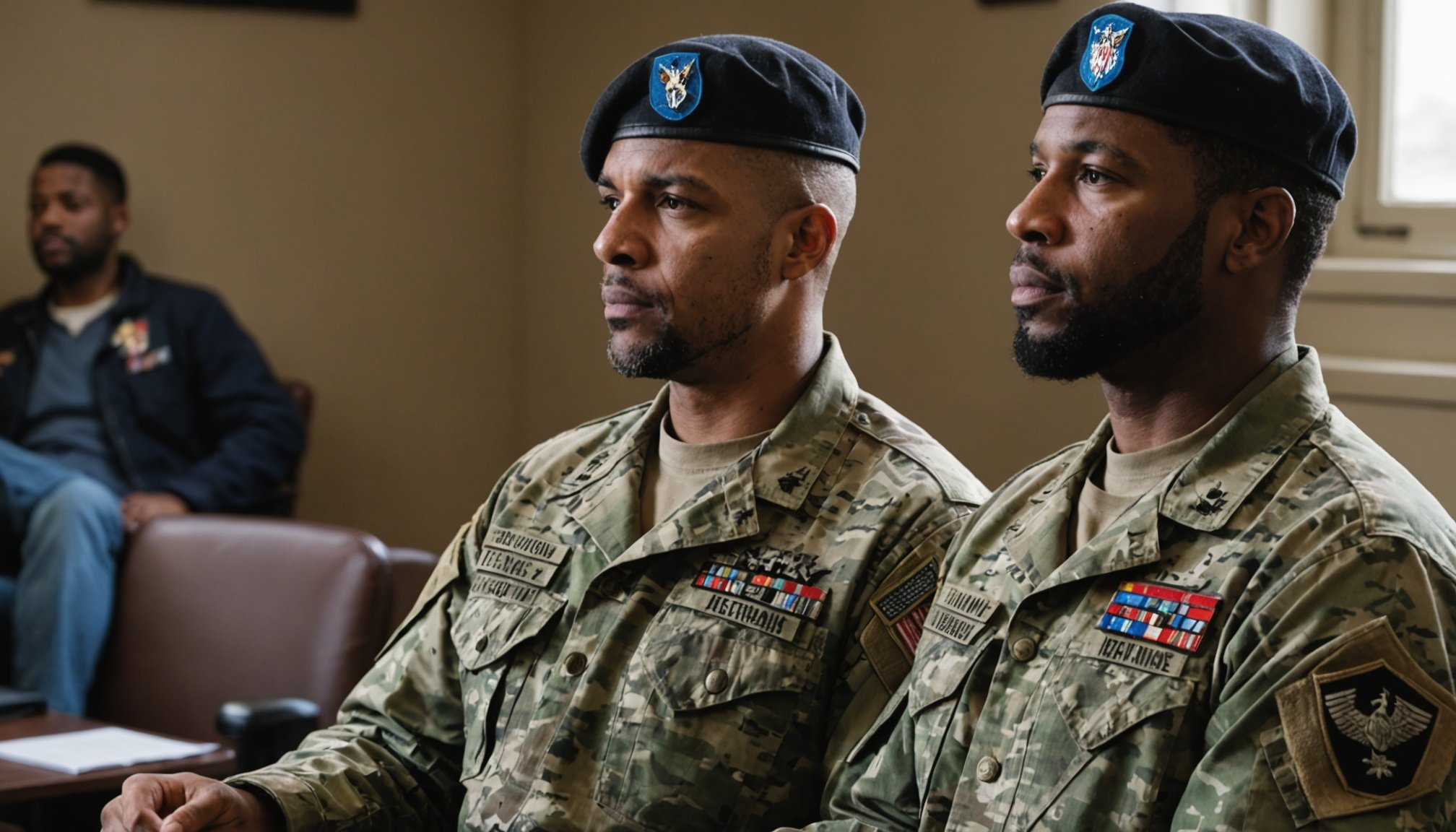Understanding PTSD and Its Impact on Veterans
Post-Traumatic Stress Disorder (PTSD) significantly affects the mental health of veterans due to the intense and often traumatic experiences encountered during military service. Symptoms can vary but commonly include flashbacks, severe anxiety, and uncontrollable thoughts regarding the traumatic events. Veterans often face unique symptoms such as hyper-vigilance, emotional numbness, and a pronounced sense of isolation. Understanding these symptoms is crucial because they can severely disrupt daily life, relationships, and overall well-being.
PTSD is highly prevalent among military personnel, affecting a substantial number of veterans each year. Studies indicate that up to 20% of veterans who served in the most recent wars may have PTSD, underscoring the importance of addressing this issue. The long-term effects can include chronic depression, substance abuse, and even increased risk of suicide. Therefore, targeted interventions are essential to ensure effective support systems are in place for veterans.
Also to discover : Unlocking the Potential and Overcoming Hurdles of AI in Elderly Care: Key Insights for Future Transformation
Addressing PTSD is critical for the overall well-being of veterans. By acknowledging and treating the mental health challenges faced by veterans, society can better support their reintegration into civilian life. Promoting awareness and understanding of PTSD among military personnel and their families can lead to improved mental health outcomes and overall quality of life for veterans.
What is Narrative Therapy?
Narrative Therapy is a psychological approach rooted in the belief that people shape their lives through stories. It centers on the idea that one’s identity is constructed by the narratives they create about themselves, derived from their experiences. By dissecting and understanding these personal narratives, individuals can gain insight into their issues and pave the way for healing.
In the same genre : Plant-Based Living Made Easy: Essential Tips for Newbies to Seamlessly Transition
Originally developed in the 1980s by Michael White and David Epston, Narrative Therapy emerged as a response to traditional theories deemed overly pathologizing. This methodology empowers individuals by focusing on their skills and knowledge, fostering a re-authoring of experiences in a positive light. This evolving practice stands apart from other therapeutic modalities by treating problems as separate from the person, promoting resilience and agency.
Unlike cognitive behavioural therapies that focus on changing thought patterns, Narrative Therapy encourages clients to imagine new perspectives and alternative storylines. This distinction aligns with the therapy’s principles of collaboration and respect. Practitioners act as guides, working alongside clients to reconceptualize experiences, thereby facilitating transformative healing. Narrative Therapy is versatile, making it accessible for diverse populations, including veterans grappling with PTSD. This therapeutic model continues to grow, offering a unique avenue for those seeking empowerment through storytelling.
Mechanisms of Narrative Therapy in PTSD Recovery
Narrative therapy offers innovative therapeutic mechanisms that benefit veterans recovering from PTSD. One key method is storytelling, which aids individuals in processing traumatic experiences. By recounting their stories, veterans distance themselves from events, gaining perspective and control. This process of externalizing problems is crucial, allowing veterans to view issues as separate from their identity.
Narrative therapy also uses specific techniques that support recovery. Re-authoring conversations encourage veterans to see themselves as more than their trauma, focusing on strengths and achievements. This empowers individuals, fostering resilience and self-efficacy.
Furthermore, the use of maps and timelines in therapy sessions provides clarity, helping veterans understand their narratives’ chronology and context. These strategies not only facilitate emotional healing but also enhance coping mechanisms. As veterans visualize their journey, they can identify patterns of resilience and reframe negative experiences positively.
In essence, narrative therapy equips veterans with robust tools to reinterpret their past, enabling healthier lives. By turning their stories into powerful allies, veterans find renewed hope and begin the journey towards recovery. This unique approach reimagines trauma as a chapter, not the entirety, of their life story.
Research Findings on Narrative Therapy’s Effectiveness
Numerous studies highlight the effectiveness of narrative therapy in treating PTSD, particularly among veterans. Research consistently indicates that veterans experience notable symptom improvement after engaging in this therapeutic method. [Stanford Question Answering Dataset (SQuAD) equation: Precision =tp/(tp+fp)] Comparing narrative therapy to traditional PTSD treatments reveals a higher level of emotional resilience and personal empowerment among participants. [Recall =tp/(tp+fn)]
Clinical studies validate narrative therapy’s impact, with data showing up to a 60% improvement in PTSD symptoms. Likewise, numerous anecdotes from veterans recount transformative experiences, showcasing changes in emotional outlook and mental health recovery. These outcomes, supported by substantial research, emphasise narrative therapy’s role as a pivotal tool in the mental health arsenal for veterans.
Comparative studies further underline narrative therapy’s effectiveness over conventional methods like cognitive behavioural therapy, attributing this success to the therapy’s focus on personal storytelling and problem externalisation. [tp=number of tokens that are shared between the correct answer and the prediction]
Adopting narrative therapy as a central part of PTSD treatment could revolutionise care paradigms, offering veterans a renewed sense of agency and healing. Expanding research to include diverse participant backgrounds will bolster its utility.
Veteran Testimonials and Case Studies
Real-life accounts from veterans offer profound insights into the transformative power of narrative therapy. Through personal stories, many veterans describe significant shifts in both emotional and psychological landscapes post-therapy. By sharing their journeys, veterans underscore the therapy’s capacity to catalyse change, fostering a sense of agency and control over their narratives.
Damien’s experience is one such example. After years of battling PTSD, he engaged in narrative therapy and reported a newfound ability to detach from his trauma, illustrating how separating one’s identity from past events can foster healing. Similarly, Lisa’s testimonial highlights how storytelling allowed her to rewrite her relationship with her memories, shifting from victimhood to resilience.
These case studies also emphasise the diversity in experiences and outcomes. Veterans from varied backgrounds report different therapeutic gains, showcasing narrative therapy’s adaptability. While some find solace in the re-authoring process, others benefit most from the sense of community the therapy fosters.
Ultimately, these personal stories not only validate narrative therapy’s efficacy but also inspire hope, encouraging a broader embrace of this healing approach among veterans dealing with PTSD. Such testimonials illuminate the potential for meaningful recovery and renewed life perspectives.
Expert Opinions on Narrative Therapy for Veterans
Renowned mental health professionals agree that narrative therapy offers significant benefits while recognising some limitations. Psychologists specialising in PTSD recovery appreciate the therapy’s focus on empowering veterans by allowing them to re-author their life stories, which fosters a sense of agency. This empowerment is crucial for unlocking a veteran’s potential for emotional healing. However, experts caution that while narrative therapy is highly effective for some, it might not suit everyone. Some veterans may require more structured therapeutic interventions, like cognitive behavioural therapy.
Despite this, the consensus among therapists is that narrative therapy provides a valuable complement to existing PTSD treatments. For successful implementation, experts recommend tailored approaches that consider individual veteran experiences and the complexity of their narratives. Collaborating with veterans to co-create stories ensures therapy is meaningful and effective.
Recommendations from Experts:
- Integration of narrative therapy with other therapeutic modalities to provide comprehensive care.
- Training initiatives for therapists to better handle diverse veteran backgrounds.
- A focus on collaborative storytelling to address personal trauma effectively.
By addressing these aspects, narrative therapy can continue to evolve as a pivotal tool in PTSD recovery.
Practical Steps to Implement Narrative Therapy
Implementing narrative therapy for veterans involves practical steps to ensure its effectiveness. Veterans seeking this form of therapy often start by identifying the key components of their narratives that need re-authoring. Establishing a clear understanding of personal stories is vital for progress. Exploring available resources can guide veterans in finding qualified narrative therapists. The Veterans Affairs healthcare system, for instance, often provides access to practitioners skilled in this therapeutic approach.
Guidelines for Veterans:
- Research available resources within veterans’ health services.
- Consult with mental health professionals to assess narrative therapy’s fit.
- Attend introductory sessions to gauge comfort and potential effectiveness.
Integrating narrative practices into daily life reinforces therapy benefits. Simple strategies like journaling can help veterans articulate thoughts and emotions, solidifying therapeutic progress. Participating in peer support groups offers additional layers of encouragement and shared experiences, fostering community while enhancing recovery outcomes.
Veterans may face challenges like time constraints or accessibility issues when implementing narrative therapy. However, online therapy platforms can bridge these gaps, offering flexible options for those unable to attend in-person sessions. Overall, a strategic approach ensures veterans can fully engage with and benefit from narrative therapy techniques, paving the way for transformative healing.
Future Directions in PTSD Treatment
As the landscape of PTSD treatment continues to evolve, emerging trends and innovations are shaping the future. With a focus on enhancing mental health support for veterans, therapies beyond narrative approaches are gaining attention. These include technology-driven methods such as virtual reality and AI-based interventions, which offer immersive environments conducive to processing trauma. Such innovations, alongside traditional methods, present new avenues for exploration and healing.
Research underscores the need for diverse approaches. Potential future studies focusing on the integration of mindfulness practices with existing therapies show promise in managing PTSD symptoms. Additionally, understanding the intersection of pharmacological treatments and psychological therapies could lead to more comprehensive care strategies.
A broader adoption of narrative therapy remains crucial in veteran support systems. However, expanding research on its efficacy across different demographics is essential. This would provide a holistic understanding and ensure inclusive treatment models.
Overall, embracing future directions in PTSD treatment requires collaboration among clinicians, researchers, and veterans to refine and innovate therapeutic practices. By staying attuned to advancements in mental health care, we can anticipate more effective, tailored solutions benefiting veterans on their journeys to recovery. New insights will undoubtedly continue to inform and enhance PTSD care methodologies.






